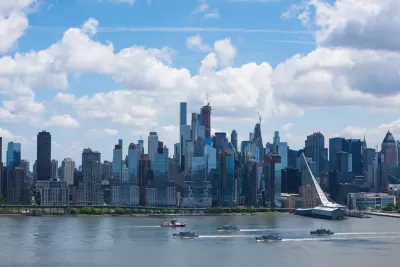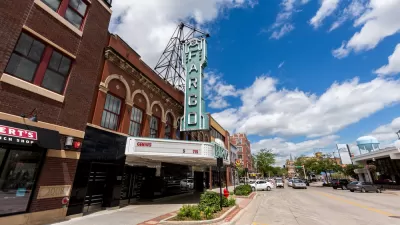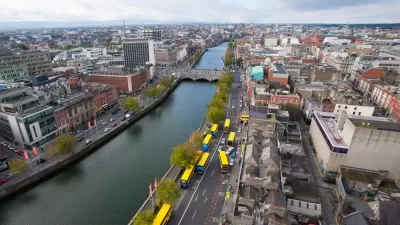A record period of U.S. economic prosperity has reshaped the economy of the U.S., in particularly obvious patterns at the metropolitan level. A new Brookings report details the way metro areas have changed.

Alan Berube writes to share news of the latest release of the Brookings Institution's Metro Monitor 2020 report on March 5. According to Berube, the report reveals the story of over a decade of economic expansion in the United States, with very large metropolitan areas leading the growth.
On the three growth indicators—changes in GDP, jobs, and jobs at young firms (a proxy for entrepreneurship)—very large metro areas overall outpaced large metro areas, which in turn outpaced midsized metro areas. The same pattern prevailed for prosperity indicators, including changes in average annual wages, output per job (productivity), and output per capita (standard of living). And in overall inclusion, the same positive relationship with metro area size characterized changes in the adult employment rate and median earnings.
Berube's article supplements the website set up to host the new report. The main report's site includes interactive infographics—like the Metro Monitor 2020 Dashboard, for example—which allows breakdowns on demographic performance for specific metropolitan areas. Interactive infographics also present economic data for metropolitan areas and an overall growth index.
Since publication, Patrick Sisson covered the report for Curbed and Stephen Lee Davis promoted the report's findings for Strong Towns.
FULL STORY: Metro Monitor 2020: Prosperity is increasing in America’s largest metro areas, but not for everyone

Planetizen Federal Action Tracker
A weekly monitor of how Trump’s orders and actions are impacting planners and planning in America.

Maui's Vacation Rental Debate Turns Ugly
Verbal attacks, misinformation campaigns and fistfights plague a high-stakes debate to convert thousands of vacation rentals into long-term housing.

Restaurant Patios Were a Pandemic Win — Why Were They so Hard to Keep?
Social distancing requirements and changes in travel patterns prompted cities to pilot new uses for street and sidewalk space. Then it got complicated.

In California Battle of Housing vs. Environment, Housing Just Won
A new state law significantly limits the power of CEQA, an environmental review law that served as a powerful tool for blocking new development.

Boulder Eliminates Parking Minimums Citywide
Officials estimate the cost of building a single underground parking space at up to $100,000.

Orange County, Florida Adopts Largest US “Sprawl Repair” Code
The ‘Orange Code’ seeks to rectify decades of sprawl-inducing, car-oriented development.
Urban Design for Planners 1: Software Tools
This six-course series explores essential urban design concepts using open source software and equips planners with the tools they need to participate fully in the urban design process.
Planning for Universal Design
Learn the tools for implementing Universal Design in planning regulations.
Heyer Gruel & Associates PA
JM Goldson LLC
Custer County Colorado
City of Camden Redevelopment Agency
City of Astoria
Transportation Research & Education Center (TREC) at Portland State University
Jefferson Parish Government
Camden Redevelopment Agency
City of Claremont





























